What are you eradicating this year?
Goodbye, carex 'Ice Dance.' My back and arms will pay for all the pulling and chopping and wrenching I went through tonight to get rid of this little Napolean, who was claiming territory belonging to my Weigela, Clethra and Franklinia. They are now breathing a sigh of relief that they are no longer being suffocated.
Also on my list: oat grass. I planted one little plant from a swap 3 years ago, and although I dug it out later that season after seeing how fast it grew, I still get tons of babies in the spring. That one is scary.
What are you eradicating this season? Maybe our lessons learned will help some newbies . . .
Comments (63)
paigect
Original Author12 years agohmm, I'm surprised that everyone is surprised about my carex. I wonder why it likes it here so darn much? It is in a very moist area, which it should like, but it also gets quite a bit of sun, which it shouldn't like. It wasn't really a problem the first couple of years, but last year was, I think, the fourth or fifth year, and that's when it started really exploding.
You all have reminded me to tackle th multiflora roses in the back soon. I hacked away at them last year, but wasn't able to get the roots up. I'm just not strong enough. I need to get someone out there to do it for me. As for poison ivy, it has its corner in my backyard, and I let it. I am too allergic to even think about fighting that battle.
And Bill, you're funny!
NHBabs z4b-5a NH
12 years agoI mostly pull up and cut back undesirables (bittersweet, barberry, buckthorn,Virginia creeper, and a couple kinds of honeysuckle) whether invasive or native, but I do use Roundup on the poison ivy due to severe reactions. I have found that several applications a season for 2 or 3 seasons is enough to get rid of it. I don't try to remove it from the whole property as it's too large, but I do remove it from areas that I or my animals will be. I leave it in other areas for the wild critters (many eat the berries) and its lovely fall color which I can enjoy from a safe distance.
Related Professionals
Finneytown Landscape Architects & Landscape Designers · Amesbury Landscape Contractors · Brunswick Landscape Contractors · Coeur d'Alene Landscape Contractors · Hampton Bays Landscape Contractors · Lorain Landscape Contractors · Round Lake Landscape Contractors · Soddy Daisy Landscape Contractors · Wallingford Landscape Contractors · Arlington Heights Decks, Patios & Outdoor Enclosures · Braintree Decks, Patios & Outdoor Enclosures · Fredericksburg Decks, Patios & Outdoor Enclosures · Lansdale Decks, Patios & Outdoor Enclosures · Marlboro Decks, Patios & Outdoor Enclosures · Pataskala Decks, Patios & Outdoor Enclosuresannikasmommykate
12 years agoComfrey...OMG, the comfrey...It is ruthless! I thought I had it all out last year, but sure enough, I can see the little monsters coming up again :grumble: They've been here for way longer than me...This house was built in 1782, so who knows when they put the comfrey in...I've finally got the front yard (directly in front of the house) whipped into shape, but the back yard/side yard/etc (about five acres) are overrun by those weed roses, bittersweet, poison ivy and poison sumac :grumble: I'm trying to reclaim one area at a time so I don't lose my mind in the process LOL
gardenweed_z6a
12 years agoIt could be the reason my C. Ice Dance behaves itself is that it's growing in full shade and gets NO supplemental water. I haven't watered it even once and last year was the first since I planted it that we had a wet growing season. The divisions are growing in more sun but they won't get any supplemental water, chiefly because it has never appeared to wilt even during a drought so it just doesn't get the attention.
There's a lot of mint growing here but mowing has kept it from taking over. Same for Vinca/creeping myrtle. I just yank it if it comes up where it can't be mowed & isn't wanted. Violets laugh at R/U, cardboard and thick layers of mulch. Wherever they come up, they get doused with vinegar but it only kills the top growth for the season. Star of Bethlehem spreads like wildfire but mostly in the lawn and gets cut down along with the grass.
My neighbor took out a lot of burning bush with his backhoe a few years ago.
pixie_lou
12 years agoAdd dandelions to my list. I just spent the morning yanking them. I've been at the dandelions this will be my 3rd year now. And I finally feel like I have them under control. Unfortunately my neighbors aren't as vigilant as I am about dandelions, so I continue to get volunteers.
FroofyCat
12 years agook, carex ice dance must be the grass i want to dig up. guessing by how long this yard went neglected, it doesn't seem to have spread much in it's area.
We have a stand of norway maples in the neighbors yard and they overhang my fence and I'm waiting for a tree guy to come and tell me about trimming any branches hanging over my fence (and pool). It won't do a heck of a lot - the branches really don't even spread that much. I wish I could get up the nerve to ask the neighbors if I could pay to cut them all to the ground and have the stumps ground up too.
and I was about to buy a sweet autumn clematis for a section of chain link fence! (I thought of that after someone talked me out of trying morning glory). The other half of the chain link fence of it is covered with trumpet vine, that we cut back aggressively.
ctlady_gw
12 years agoFor anyone struggling with multiflora rose or larger burning bush or other invasives, or even just unwanted saplings -- I highly recommend a tool called the WeedWrench. It was recommended by someone from the CT Invasive Plants group, and our local land trust bought one. I was so impressed, I bought one, too -- LOVE it. Makes fast work of anything by pulling all the roots out. Very simple, very sensible. Incredibly useful. I think one has to get it from their website, not in stores. But believe me, it's worth its weight in gold!
As for comfrey, while it does spread, at least it's easy to pull each spring ... unlike the tansy!! On the plus side, the deer supposedly don't like either, and I've actually had tansy recommended as a boundary planting to discourage them from coming into a garden. STILL not worth planting in my book, but at least a plus to an otherwise horribly invasive herb!
annikasmommykate
12 years agoMy comfrey is definitely not easy. It has been established for a very long time...Last year I was pulling big tuberlike roots out and every time I think I have it, it comes back. It grows from little bits of roots, so :grumble:
I'm pretty sure I got the last of the tansy out of my place last year, but I can already see it coming back at my moms and I was ruthless with it last year.
defrost49
12 years agoI can't believe I paid money for Artemesia Limelight. I pull up every piece I see. I'm sure there will be more peeking up again this year.
Glechoma hederacea, if that's what I have, is a horrible pest. This weekend I will put black plastic over one vegetable bed. That does a good job of suffocating what crept into the bed since last summer. It doesn't totally kill the plants but it weakens them enough so I can rake off most of it. I also edged the bed with layers of newspaper and grass clippings to slow it's progress into the beds.
Gosh, I was thinking of planting comfrey again esp if we get chickens.
Japanese knotweed "bamboo" started up on our property along the road which I suspect resulted from brush mowing the town does every year. There are huge stands of it down the road. My husband sprays it with a brush killer that doesn't seem to harm the day lilies or grass. The foliage is sprayed. The leaves die. It gets down into the roots. It takes vigilance. At this point, we might see a solitary plant growing.When we moved here in 2007, I hurriedly started a holding bed for perennials I moved from our old house. But, I didn't keep up with the weeding so it has become infested with goldenrod and who knows what else. This year I will finish transplanting to permanent beds and then start a lasagna style vegetable bed on the holding bed.
This is a tough subject. My husband loves to mow and wants things looking neat even though we don't have a perfect lawn. Our yard opens into a meadow which is being turned into a hay field. Last year he mowed right up to our grass area but I've read that we should have a band of wild plants for birds and beneficial insects. I'm going to insist on one since the birds who sit on the pea fences always dive into the meadow for insects, rarely the lawn area.
terrene
12 years agoTree oracle, who ever said that poison ivy was a desirable native? You disbelieve that Euonymous alatus is invasive because of what you observed on some little patch of your land, yet ignore the anecdotes of others that it IS invasive on their little patches of land. You also ignore the logic that it is very unlikely that this particular species, because of it's popularity, hardiness, and commercial benefit, would have been ruled invasive without good scientific evidence. (I don't need scientific evidence - just drive around in the fall when it turns red - the species has seeded prolifically in some wild areas).
Paigect: For Rosa multiflora, try some Brush-be-gone concentrate and apply immediately to cut stumps. Or a Brush b gone solution in the spray bottle at the recommended dosage, sprayed on the foliage when it is actively growing, may also work. Both these methods work well on Oriental bittersweet.
CTlady - I've had a medium sized weed wrench for about 5 years. They are great, but only one weapon in my arsenal! Supposed to pull up to 2 inches diameter, however, some invasives come out easier than others. Buckthorns have such tenancious roots that I only pull up to 1 inch.
For large unweildy woody stumps, I just cut the stump down or buddy with chain saw cuts them down, and poison the stump quickly after cutting. It is only necessary to apply herbicide to the cambium layer, but should be done as quickly as possible. I then sometimes encourage rotting of the stump and roots and discourage resprouting by piling organic matter on top of the stump and keeping it moist for some number of months.
wispfox
12 years agoAh, evil plants.
The same artemesia that everyone else is talking about. It's bounded on two sides, which helps. I took a shovel to it, and am pulling up anything else that pops up. It's way better than this time last year, but I didn't know what anything was last year! (new house)
bishop's weed. I think the previous owner planted it on purpose. I'm mostly able to handle the two spots of non-variagated types that I concentrated on as they seemed to spread faster. And, those two sections appear to be mostly seedlings. The variagated one is daunting, though...
sweet pea; again, planted by the previous owner, I think.
Forsythia: not _eradicating_, but seriously reducing. IT's really quite ridiculous.
Two things I'm not sure what they are: a vine thing whose leaves look like morning glory, roots smell sweet (of ginger?) when broken, which spreads just under the surface. It was one of the first things to start growing this spring, which meant that I could pull a bunch of it, along with the sweet pea, fairly early on. I am quite sure that it's not gone, though, because I still sometimes smell its distinctive root smell while working in the garden.
The other thing I only noticed this year while cleaning up the forsythia. IT's also a vine, which was twining around many nearby plants and making walking in the area difficult. No noticeble smell, and no leaves yet. Dark red branches and roots, though. I think it was planted on purpose.
It's not yet time to keep an eye out for black swallowwort, although I _know_ I have that. Damn thing.
We also have trumpet vine, multiple different wysteria, and multiple honeysuckle in our yard. So far they are behaving ok, as long as I keep on top of them.
Can't recall anything else at the moment. MOstly it's been the bishop's weed, artemesia, and that unknown ginger-smelling root, thus far.
Crazy plants. :)
siennact
12 years agoGolden bamboo, year 3. Also two kinds of yellow sunflower family plants, I can't think of the names off hand. Heliopsis varieties if I recall correctly. Both spread by underground runners.Nice plants, wrong garden.
bebebzzz
12 years agoGood post!
1) I have been battling ailanthus for years, and have clearly not been winning! This year, I've finally given in and plan to use chemicals - I'm going to paint the stumps after they're cut.
2) This past winter, I finally convinced my husband that though Euonymus alatus is very pretty, it is bad news for the environment, so this year I will also be attempting to get rid of all of the damn burning bush around my house. Bill in Rhode Island, please come to my house for proof that it is invasive. :)
3) Japanese Barberry. I think I'm going to get my hands on one of those WeedWrenches suggested by ctlady to tackle this one.I think that's enough for one season! :)
Steve Massachusetts
12 years agoBebe,
Ailanthus altisima is incredibly hard to eradicate. I had several mature trees to deal with in various parts of my property. When you cut it down, it sends emergency signals out through these long rhizomes that tell the nodes on the rhizome to start growing. As a result, cutting down the tree makes the problem worse! Lots of little Ailanthus trees start to pop up all over the place. These rhizomes can be 30 feet or longer underneath the soil and are fed by their own feeder roots. Where I could, I would dig up the entire rhizome which would literally cross my entire yard. Each tree could have a dozen of these or more. Occasionally, one of these rhizomes would go down below a large rock and I couldn't get it out. In that case I would cut it and paint it with full strength glyphosate (not the premixed diluted kind). This certainly had a discouraging effect on the tree.
I fully expect to rejoin the battle this year, as several small trees planted themselves in the middle of an old rock wall on the edge of the wooded area of my property. These will be difficult to dig out, but I will get them. They will die.
Steve
Nancy Vargas Registered Architect
12 years agoGroundhogs and rabbits!
Honestly, I just came in from the garden and the groundhogs are already decimating my perennials. Nine eryngium plants chewed to the ground! I'm not messing around this year. These pests are gone!
defrost49
12 years agoWhitegarden, we haven't seen groundhogs around here since we originally lived here in the 70s and owned a dog who was a great groundhog decimater. Possibly the local coyotes keep the population down. Good luck.
Pulled and dug two cart loads of creeping charlie/jenny yesterday just from one vegetable bed yesterday. Placed dark plastic over another bed that is almost completed covered with it. I stop weeding in late August/early Sept so the stuff continues to grow.
I posted a note to a wild forager to see if it's anything she can use/eat. I'm not sure that it's edible but I saw a reference that it was.
girlcat36
12 years agoAs far as things that I have planted, I am trying to pawn off about half of my Rose of Sharons. I'm just not feeling the love anymore.
For invasives, the big battle is with invasive Japanese honeysuckle shrubs, which I believe the builder must have lined the back and sides of my property with 30 years ago. I am armed with loppers, a sawzall, and a steel drum for burning it. If I could get my chipper running I would chip it. It looks like a bomb went off where I cleared some of it. NOTHING grows under or beside it; it leaves the understory devastated.
It's not fun, and hubby refuses to deal with after trying to clear a little last year; so I'll battle it on my own. Thank goodness for The Ugly pruning blade for my sawzall!I am also battling multiflora rose, oriental bittersweet, and English ivy, but the main battle is with that darned honeysuckle!
Teresa
diggingthedirt
12 years agoFroofyCat (and others) - Sweet autumn clematis is only thuggish in the warmer areas of New England.
I know people in Plymouth. just a 20 minute drive from me, who have no problem with it self-sowing or growing out of bounds. And, it IS lovely in bloom, has good clean foliage (naturally, it's never bothered by insects, in my experience!), and flowers when few other things are in bloom.
So, please don't cross it off your list if you're in one of the colder parts of the region - it does have a lot of really good qualities.
leira
12 years agoIt's black swallow wort for me...I hate the stuff, and it's invaded the lawn, among other things. We're going to try one more year of trying to deal with it naturally, and if that doesn't work, I think we'll be going for the nasty chemicals.
We also have creeping charlie, and I find it annoying, but not nearly so annoying as the black swallow wort.
leslie6ri
12 years agoI've got the typical wild plants... greenbrier, multiflora rose, bittersweet, and a honeysuckle that's gone mad. I just try to avoid the poison ivy. I was never affected by poison ivy until the year I hacked away at it while basically lying in it. My right hand looked like something out of a horror movie. I still remember the look on the pharmacist's face as she mumbled something about maybe going to the emergency room...
Also sweet woodruff that's filling a bed and I just planted sweet autumn clematis last year. I think I'll move it to a spot where I wouldn't mind it spreading a bit. I had no idea it was thuggish.
bebebzzz
12 years agoSteve,
Yes, I definitely see the evidence of what you're describing with the Ailanthus suckers. I guess I'm going to have to mount a two pronged attack this year: dig out any rizomes I can, and paint everything else.Sheesh.
crnaskater
12 years agoALL of the ornamental grassses (15 various) as over the 10 years they have just gotten out of control. The rosa mutiflora is an ongoing battle. At least the poison ivy has been eradicated so I just check each spring for the chartreuse color leaflets, pull them with tongs and drop into a plastic bag for disposal. At least the warm weather before leaf-out has allowed me to finish cleaning up all the broken stuff from the Oct blizzard yet branches are still breaking off from the high trees in the adjoining woods. I just retired march 1st and love the extra time to address all these chores at my own pace!
dekprizm
12 years agoI guess it's called wild onion....but where did it come from? I have not seen this in my yard before this spring and now it's popping up everywhere. It has very deep roots that must be dug up, and I still can't seem to get them all!
Also, morning glory....the ones I planted last year did not turn out to be the pretty blue ones. While they cover the pergola with leaves, the flowers are minimal and pale colored, and they're choking my climbing roses!silvergirl426_gw
11 years agoThis year it's chickweed! I don't recall ever noticing it much, but this year, it's everywhere -- in the lawn and in the beds. A weed id site said it likes cool weather, so maybe these last couple of weeks has done it. The creeping charlie and dandelions (which I admit, I have weeded extensively) pale by comparison.eSweet autumn clematis has never been a problem for me (in the Litchfield Hills) -- in fact, I wish it would bloom more vigorously. Also declaring war (again) on the hated goldenrod, which the PO, I think, cultivated. Ugh.
alexiebalexie
8 years agorosa rugosa (husband's dream turns into my nightmare), ribbon grass (a neighbor's free plant give away, again husband planted). ornamental grasses (another one. husband planted. pulled 8 last year, still 8 more to go)- ugh just thinking about it all. love my husband but seriously thinking of banishing him from gardening.
lucyd_58
8 years agoWell, I'd like to eradicate my resident groundhog, but she looks pregnant again this year so I don't have the heart to relocate a family. I'm in northeast CT (Zone 5b) and don't have a problem with autumn clematis. I'm always battling the neighbor's bittersweet. In fact, I think I went a little too heavy on the Roundup and killed some of the forsythia with which it's entwined. In fact, none of my forsythia (in various locations) look particularly vibrant this year. Do you think it was the cold weather?
suzabanana (6b Boston/N. Shore)
8 years agoI am still trying to eradicate both of these things - anyone know what they are called or how to get rid of them? Roots are very deep and they grow everywhere and smother anything in their path...
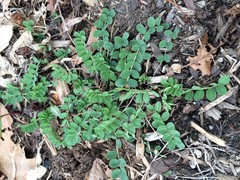
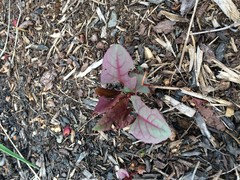
Marie Tulin
8 years agothose damned wild onions. I sit on my stool with a digging knife go at it....hours and hours. They spread and spread. Nasty nasty nasty
NHBabs z4b-5a NH
8 years agoSuzabanana - The top one could be one of many things depending on size and flowers. Does it have fibrous roots? If so, check out Lysimachia nummularia (not L.m. aurea.) Cerastium usually has fuzzy leaves. Stellaria is another possibility. Both of the previous two are called chickweed. One with a tap root but often a reddish hint to the stems and sometimes a red blotch on the leaves is Euphorbia maculata, which has milky sap if torn.
The second photo might be pokeweed (Phytolacca americana), a quite large plant with a white parsnip-like tap root that is poisonous along with much of the rest of the plant. Its stems and new leaves are often reddish and the leaves get to be 4-5 inches long in my garden.
I would like to eradicate the voles, but it isn't possible with the amount of field we have, but I am planning to try a trapping program this year so that they at least don't get worse.
patchworkfarm (z6 CT)
8 years agoSuza--Your top photo looks like crown vetch. I've pulled most of what was planted 15 yrs ago by the previous owners. Still find the occasional small patch.
My goal this year is to eradicate the beast of wisteria which blooms poorly and sends out too many ground-snaking runners through two beds on the trellis it was meant to frame.
suzabanana (6b Boston/N. Shore)
8 years agoDing ding! Patchworkfarm, you are the winner! After looking it up on Google, that is precisely what it is. It's sooooo frustrating and eventually takes over. I find the roots go everywhere!
I think my second photo is Japanese knotwood after doing some searching around online. Also very annoying.
barrett001
8 years agolast modified: 8 years agoFighting many of the usual suspects mentioned here: oriental bittersweet, black swallow wort, wild onion. Plus a few I haven't heard anyone mention, like maple seedlings (incredibly fast-growing) and a green brambly thing the local folks call "catbriar" growing everywhere.
I'm expecting to see poison ivy sprouting any day now. We have a hillside infested with the vines which never seem to die no matter how often I spray the leaves. I caught a bad case of PI last spring when I tried to get rid of some vines so I won't touch them at all now, just wait for the leaves & spray.
Terri zone 6
8 years agoLast year we found Oriental bittersweet everywhere, tore it out and took it to the garbage. I have seen none this year.
We do have maple seedlings, poison ivy, thorny weed- don't know the name and a weed in the lawn that's everywhere.
Terriprairiemoon2 z6b MA
8 years agoTerri, were they just little bittersweet seedlings you tore out? Did you have any older vines? I had one escape our notice come up in the middle of an Itea and I had to cut the Itea back to the ground this spring due to the ice damage from last winter and I see the Bittersweet coming up in the middle. I'm not sure how difficult it would be to dig it out.
Our neighbors have them growing on their fence and I didn't realize they travel so well and now we are looking for seedlings constantly. I've found about five of them already this season.
Always have Maple Seedlings everywhere and PI as well, another gift from our neighbor who ignores it in their yard and it comes under our fence and I suspect theirs flowers as well because we get it all over the yard.
We also still have Campanula that we can't get rid of. In one section I just gave up and pulled out what I could and sowed pumpkin seed there, hoping to at least not have to look at it all season. I don't dare plant a perennial near it, and end up with a tangled mess.
prairiemoon2 z6b MA
8 years agolast modified: 8 years agoWe are seeing a lot of it this year too and we already have small rashes, that I don't even know where we got. I'm always so careful and observant, but I guess I wasn't careful enough this time.
We pull ours, with plastic grocery bags over our hands and this has been very successful for us.
Terri zone 6
8 years agoPrairiemoon- we call it the weed from hell. It grows in air practically and is a prolific leafer. we had the vine one. it had wrapped around our deck and was going up the gutter about 10 feet long. I pulled it but left some of the root in the ground to see what would happen. Checked it a couple of weeks later and it made it back up the deck about 3 feet!
I think the birds or squirrels eat it because it was all over and in very odd places.
Barrett- we have PI across the street in the woods. We find it in our yard and very close to our house usually snugging up against a desireable plant.
Round up works like crap for me. Their pi product didnt work very well either.
Terri
barrett001
8 years agoI agree, Terri--I am finding the ordinary Roundup (which is all my relatives here have) very poor at fighting the PI. I've sprayed some of it twice and it's barely been daunted--not drooping much at all, unfortunately.
I think the spray I have at home is slightly better (or maybe my PI at home is simply smaller & more easily affected)--it's the "woody weed" type of killer. But none I have tried so far does the job very well.
Prairiemoon, that NPR story is scary! Thanks for the tip about pulling it with plastic bags--not sure I trust myself even to manage that successfully, but I'll think about trying it. Maybe double-bagging my hands...plus rubber gloves...would work....barrett001
8 years agoYes, I don't trust my washing machine to get PI off normal gardening gloves....
Ever since I had my truly horrible case last spring, I've worn heavy rubber gloves that I scrub down with some rubbing alcohol after each use, & regularly change to a new pair. So far so good....
prairiemoon2 z6b MA
8 years agolast modified: 8 years agoBarrett - We don't seem to have a problem using the plastic bags. Have been doing it for years. You have to be alert and very focused on what you are doing and go about it slowly, but if we get a small rash, it's from a piece hiding in a bed we are working in that we didn't notice, not when we are removing it with the bags. We also normally go through the whole yard and remove every piece we can find before we do any work in the beds, This year we didn't. We double bag too. I don't use my gardening gloves because I don't want to worry about it in the washer. I would use disposables.
devastacia
8 years agoI've been fighting the war on wild violets. The previous owners let em just go crazy. They've managed to choke out the grass, and ...dandelions?!
Marie Tulin
8 years agoTECHNU poison ivy wash: right up there with sunscreen, hats, gloves and tetanus shots for protection against garden miseries.
barrett001
8 years agoYes, my husband swears by Technu if he even suspects poison ivy has been anywhere near his skin. I prefer Zanfel, but it's so expensive that I've switched to a generic drug store clone of it.
I get a similar rash reaction to the sap of Englisn ivy (not quite as bad as PI), hence the rubber gloves whenever I do any gardening/digging/etc. I never know which vines I might possibly touch.ontheteam
8 years agoI am fighting a valiant battle against violets,orange daylillies,every
tree sapling the squrriles can plant and poision ivy..can't forget that!
I am literately sitting on the ground spading up pathes of beds so I
can get to the violet roots. When wee brought the house and i jumped in
to garden I made a lot of newbie mistakes...like not eradicating them
fully before planting so now they have filled in next to some of my
woodland and spring ephemeral that I dare not move.
I had thought I
had dug out every freaking daylilliy on the property..but alas they have
grown back with a vengance and are taking over in a similar fashion to
the violets so I can;t just nuke the area. Lots of tedious digging
here...claireplymouth z6b coastal MA
8 years agoMost of what I'm doing is not exactly eradication, it's more trying to control rampant growth. I'm trying to limit Virginia creeper and meadow phlox to a reasonable section of the garden. Virginia creeper is fine in the woodier areas, but not everywhere where it can trip unwary passersby (and me) and smother other plants. Meadow phlox too is wonderful in bloom and the hummingbirds love it but the roots become deep and broad and woe to other more modest plants in its vicinity.
A byproduct of this selective removal came yesterday when I started pulling out the meadow phlox under a rose where I was trying to establish some new daylilies. Mixed in with the phlox were were some plants with tiny white flowers that I'd never seen before. I left them there thinking they were native but I checked the Connecticut Botanical Society's Wildflower site and I think they were the very invasive Garlic Mustard which I've never seen before. I say were because I watered them this morning and then carefully pulled them all out along with their roots. I put them in a bag along with the poison ivy seedling I found the day before.Like PM2 I use the pooper-scooper technique of grabbing the poison ivy plant with the plastic bag on the hand and then inverting the bag to cover the plant, which gets inserted in another bag and sent to the trash.
Claire
artemis_ma
8 years agolast modified: 8 years agoEradicating barberry. Also eradicating bamboo that someone gave me several years ago, but now deny that they did. Also need to eradicate poison ivy, even though this is a native plant. Not fun, that stuff.
barrett001
8 years agolast modified: 8 years agoI too have given up on total eradication and would be very happy with a modicum of control but the removal does indeed bring a learning experience....
I fought English ivy for 13 years in England (house was nearly swamped in it when we moved in) only to find it again threatening this property here (though not the house, thankfully). I don't mind it on the rough rock walls--and in fact I think I may threaten the integrity of these old walls if I really tried to get rid of all the huge gnarled ivy trunks that have woven themselves between the stones.
But I do want to end its march over the flower beds, lawns & trees. One small bed was completely drowned, plus several trees were covered, and it likes the chimney too much.... The problem is that once I clear the ivy out, all these other invasives suddenly appear--the black swallow wort (everywhere!), Oriental bittersweet, the dreaded PI, & a few others I can't even identify.
claireplymouth z6b coastal MA
8 years agoI've ceded parts of the yard to English ivy and just try to control the spread. The eternal problem, as barrett001 says, is that something will always try to occupy the suddenly bare territory, and that something may be just as bad or worse than what you ripped out.
I just spent a few hours pulling out jewelweed from where it had inserted itself in between and in the middle of other plants. The first year I saw jewelweed I thought, "oh, pretty orange flower and native too". The next year there were about twenty of them and I still thought, "oh, pretty orange flower and native too". But the next year there were several hundred and I started pulling them. Luckily they pull out easily, but all you need to do is to leave one and it seeds all over the place.
I always feel a little guilty pulling out jewelweed, it has so many interesting medicinal uses, but there are limits and this plant doesn't understand limits.Claire






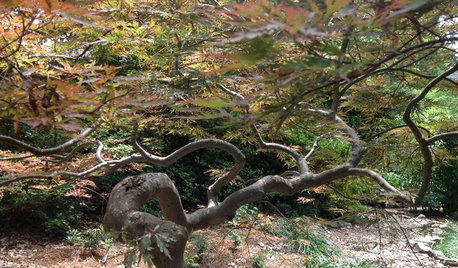
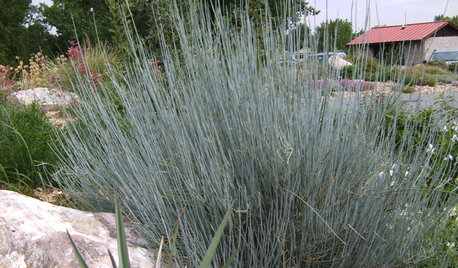
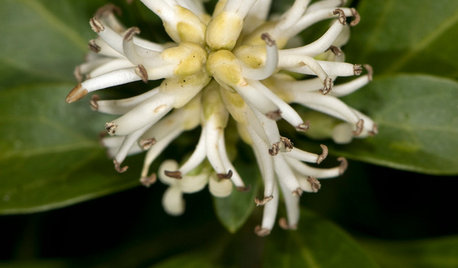








barrett001